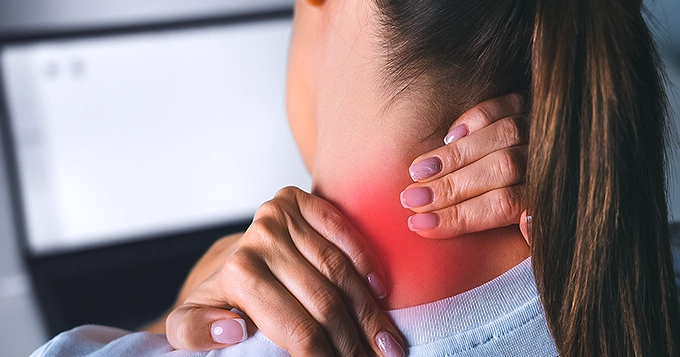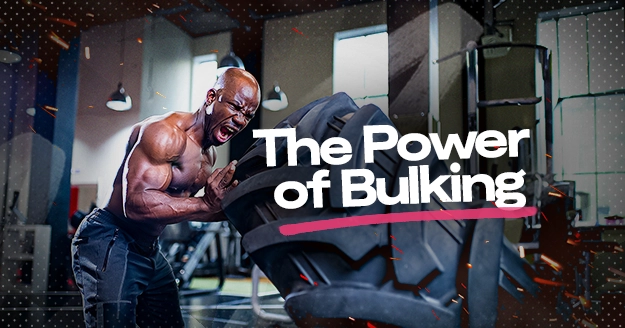Is your neck sore after working out? It’s a common issue many people face, but there are actually several simple strategies to try to alleviate the discomfort and prevent it from interfering with your active lifestyle.
Why Is My Neck Sore After Working Out?
Many newcomers to fitness and seasoned gym enthusiasts often wonder: Should I feel neck pain after workout? Unfortunately, there is no one exact answer to this. Let’s simplify things:
Did you specifically target your neck during your workout, or is there no obvious reason for it to hurt? If you focused on strengthening your neck muscles, it’s normal to feel some soreness afterward—that’s just your muscles adapting to the exercise, a phenomenon known as DOMS.
However, if you were doing exercises like deadlifts or squats, which typically shouldn’t strain your neck, and you’re experiencing discomfort, it’s possible you may have strained something during your routine. While this isn’t typical, it might not cause immediate concern. That said, let’s delve into distinguishing between muscle soreness and actual pain and how to assess whether it’s something to be worried about or not.
Differentiating between muscle soreness and neck pain after workout can help you understand whether your neck discomfort is a cause for concern.
Muscle soreness, known as DOMS, occurs after a strenuous workout and is characterized by a dull, aching sensation that starts within hours and may last days. It’s typically not concerning.
In contrast, injury-related pain is immediate and more intense, often resulting from improper form or acute incidents.
To distinguish between the two:
- If the pain persists constantly, it’s likely an injury; if it’s only felt when moving or touching the muscles, it’s probably DOMS.
- DOMS subsides within days, while injury-related pain may persist.
- Look for swelling or bruising, which indicates an injury.
- Injury pain is often centralized in one area, while DOMS affects both sides symmetrically.
- If you suspect an injury, seek medical attention. Otherwise, continue reading to manage DOMS effectively.
Things to Do to Avoid Neck Discomfort During Exercise:
- Proper Warm-up and Cool Down
Before starting any physical activity, it’s crucial to properly warm up your muscles to prevent strains and injuries, including those in your neck. Incorporate gentle neck stretches and rotations into your warm-up routine to prepare your muscles for your workout.
- Maintain Good Posture
Focus on maintaining proper head, neck, and spine alignment during lifting weights, running, or cycling exercises. Keep your shoulders relaxed and avoid slouching to reduce tension in your neck muscles.
- Gradually Increase Intensity
Avoid increasing the duration or intensity of your workouts suddenly, as this can strain your muscles and lead to injury. Rather, increase the duration and intensity of your workouts gradually over time so that your muscles can gradually become stronger and more adapted.
- Use Proper Equipment
Using the right equipment for your physical activity can significantly reduce the risk of neck discomfort. Ensure your exercise equipment provides adequate support and is properly adjusted to fit your body.
- Listen to Your Body
Pay attention to any warning signs of neck pain working out effect, such as pain, stiffness, or limited range of motion. If you experience any discomfort, listening to your body and modifying your workout accordingly is essential. Avoid pushing through pain, which can worsen the injury and prolong your recovery.
Things to Do After Exercise to Alleviate Neck Discomfort:
- Gentle Neck Stretches
After completing your workout, incorporate gentle neck stretches to relieve tension in your neck muscles. You can gently tilt your head from side to side, forward and backward, and slowly rotate your neck in both directions.
- Apply Ice or Heat
If your neck feels sore or stiff after exercise, applying ice or heat can help alleviate discomfort and reduce inflammation. To minimize swelling, you can use a cold pack wrapped in a towel for 15-20 minutes or apply a warm towel or heating pad to relax tense muscles.
- Proper Rest
Allocate sufficient time to rest and recover between workouts to prevent overuse injuries, including neck discomfort. For the sake of your general health and muscle recovery, include rest days in your workout regimen and make sleep a priority.
- Massage
Give yourself a gentle neck massage using your fingertips or a massage ball to help release tension and promote relaxation in your neck muscles. Massage both the sides and back of your neck gently. Don’t forget to massage the base of your skull as well, where tension often accumulates.
- Take a Warm Bath or Shower
Dipping in a hot tub or standing under a hot shower can help relax tight muscles and soothe neck pain working out effect. Allow the warm water to cascade over your neck and shoulders for several minutes to promote relaxation and relieve tension.
- Practice Relaxation Techniques
Relaxation techniques include:
- Deep breathing
- Meditation
- Progressive muscle relaxation
These reduce stress and tension in your neck muscles. Find a comfortable space to practice these techniques for a few minutes each day to promote overall relaxation and well-being.
- Proper Nutrition
Fuel your body with a balanced, nutrient-rich diet and proper hydration to support muscle recovery and prevent fatigue during exercise. Include a variety of whole grains, fruits, veggies, lean proteins, and healthy fats in your meals to give your muscles the vitamins and minerals they need to function optimally.
- Use Over-the-Counter Pain Relievers (as a last resort)
If neck discomfort persists, especially back neck pain after workout, despite you already trying other remedies, over-the-counter pain relievers such as ibuprofen or acetaminophen can help alleviate pain and inflammation. If you have concerns about any underlying medical conditions, speak with a healthcare provider and adhere to the recommended duration on the packaging.
How Long Does Neck Pain Last After Workouts?
So, how long will neck pain last after workouts if it’s due to DOMS?
It can vary significantly based on various factors. When you perform new exercises, your muscles are challenged in ways they’re not used to, leading to more intense DOMS that can linger longer. This is especially true if neck training is new to you. Initially, you may experience severe DOMS after your first few neck workouts, but as you continue training, the discomfort typically lessens in severity and duration.
Another critical factor is your post-workout recovery routine. A well-balanced diet with sufficient protein aids in faster muscle repair. Similarly, getting adequate sleep, ideally 7-9 hours per night, accelerates recovery.
Genetics also play a role, as do your recovery practices, such as soft tissue work, mobility exercises, and other methods for pain relief. If you’re seeking ways to alleviate neck pain quickly after workouts, stay tuned – we’ll discuss some effective strategies shortly.
Conclusion
Incorporating these simple strategies into your exercise routine can help minimize the risk of neck discomfort and promote overall muscle health and well-being. Remember to prioritize proper warm-up, maintain good posture, gradually increase intensity, use proper equipment, listen to your body, allow for proper rest, and fuel your body with nutritious foods. By taking care of your body both during and after exercise, you can enjoy a more comfortable and rewarding workout experience while minimizing the risk of neck discomfort.








